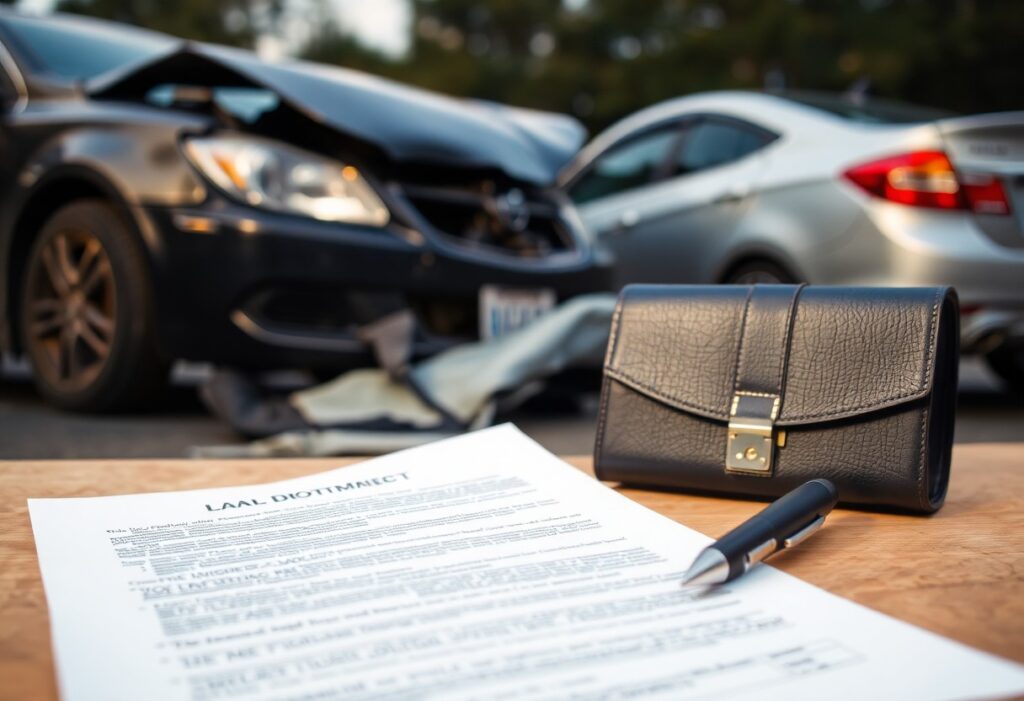If you’re involved in an accident in California, your rights and compensation are at stake. You face a complex legal system, where comparative negligence can impact your case. This rule means you may be found partially responsible for the accident, affecting your settlement. You need to understand how this rule works to protect your interests and get the fair compensation you deserve. You should seek legal help to navigate this challenging process and ensure your rights are protected.
Background
For individuals involved in accidents, understanding the legal landscape is vital. You need to know how California’s comparative negligence rule affects your case, making legal help crucial in navigating the complex process.
History of Comparative Negligence
By examining the past, you can better understand the present. The following table outlines key points:
| Year | Event |
|---|---|
| 1975 | California adopts comparative negligence rule |
This shift impacts how negligence is assessed in accidents.
Current Legislation
With the current legislation in place, you should be aware of your rights. California’s comparative negligence rule allows partial fault to be assigned to each party involved in an accident, affecting compensation amounts.
Consequently, as you navigate the legal system, you’ll encounter complex calculations and negotiations. You must understand how your degree of fault will impact your settlement, making it crucial to seek expert legal guidance to ensure you receive fair compensation for your injuries and damages.
Key Principles
Some of the main principles of California’s comparative negligence rule are designed to protect your rights in the event of an accident. You should understand how this rule affects your case and potential compensation.
Proportional Liability
Practically, the rule of proportional liability means that you will be assigned a percentage of fault, which will impact your damage award. You must consider this when evaluating your case.
Damage Awards
About the amount of damages you can legally claim, it’s important to know that California’s comparative negligence rule allows you to seek compensation even if you are partially at fault. You can still recover damages for your injuries.
But as you explore deeper into the specifics of damage awards, you’ll find that the amount of compensation you’re eligible for will be reduced by your percentage of fault. You should be aware that insurance companies may try to assign a higher percentage of fault to you, which could significantly impact your settlement. You must be prepared to negotiate and advocate for your rights to ensure you receive fair compensation for your injuries.
Implications
Any case involving comparative negligence in California can have significant implications for your claim. You may be entitled to compensation, but the amount will depend on the degree of your negligence.
Increased Complexity
At the outset, comparative negligence cases can be complex and challenging to navigate. You will need to understand the nuances of the law and how they apply to your situation.
Need for Expertise
By seeking the help of a qualified attorney, you can ensure that your rights are protected and your interests are represented. You will need expert guidance to navigate the legal process and secure the best possible outcome.
To succeed in a comparative negligence case, you must thoroughly understand the law and its applications. You will need to gather evidence, build a strong case, and negotiate with insurance companies. Your attorney will help you determine the degree of negligence and calculate the compensation you are entitled to, ensuring that you receive a fair settlement and avoid costly mistakes that could jeopardize your claim.
Benefits
Many Californians benefit from the state’s comparative negligence rule, which allows you to seek compensation even if you’re partially at fault. This rule provides a more nuanced approach to liability, enabling you to recover damages in accidents where you share some responsibility.
Fairer Outcomes
Along with promoting fairness, the comparative negligence rule ensures that you’re not barred from seeking compensation due to minor contributions to an accident. This leads to more just outcomes, where your degree of fault is taken into account when determining damages.
Reduced Litigation
Litigation costs can be significant, but California’s comparative negligence rule helps to mitigate these expenses by encouraging settlements and reducing the number of cases that go to trial. You’ll likely face lower legal fees as a result.
At the heart of the reduced litigation benefit is the fact that you’re more likely to settle out of court, avoiding the time and expense associated with a trial. This not only saves you money but also allows you to resolve your case more quickly, bringing closure and allowing you to move forward with your life.
Challenges
Your case can become complicated when dealing with California’s comparative negligence rule, which can lead to reduced compensation if you are found partially at fault.
Determining Fault
Any attempt to navigate the legal system without a lawyer can be risky, as the other party may try to shift the blame onto you, affecting your entire claim.
Calculating Damages
An accurate calculation of damages is necessary to receiving fair compensation, and a lawyer can help you determine the full extent of your losses.
But calculating damages can be a complex process, involving medical expenses, lost wages, and pain and suffering, which is why it’s in your best interest to have a lawyer guide you through the process to ensure you receive the compensation you deserve.
Role of Legal Professionals
Once again, you find yourself in a situation where expert guidance is necessary to navigate the complexities of California’s comparative negligence rule. Your case requires a deep understanding of the law, and professional legal help can make all the difference in the outcome.
Navigating Complexities
Besides the obvious benefits, a legal professional can help you sort through the intricacies of your case, identifying key factors that may impact the outcome, such as evidence and witness testimony.
Ensuring Justice
For your own protection, it’s necessary to have a legal professional by your side to fight for your rights and ensure you receive fair compensation. Your legal team will work tirelessly to build a strong case, using expert knowledge to advocate on your behalf.
Considering the potential consequences of inadequate representation, you should prioritize finding a skilled and experienced legal professional to handle your case. As you seek justice and fair compensation, your legal team will be your strongest ally, helping you navigate the challenging landscape of California’s comparative negligence rule and ensuring that your rights are protected throughout the process.
To wrap up
To wrap up, you now see how California’s comparative negligence rule affects your case. You understand that your degree of fault impacts your claim. If you’re found partially at fault, your damages will be reduced. You need legal help to navigate this complex system and ensure you get a fair settlement. Your lawyer will guide you through the process, protecting your rights and interests, so you can focus on recovering from your injuries.










